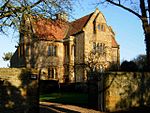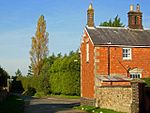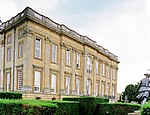Tiffield railway station
1869 establishments in EnglandDisused railway stations in NorthamptonshireFormer Stratford-upon-Avon and Midland Junction Railway stationsPages with no open date in Infobox stationRailway stations in Great Britain closed in 1871 ... and 3 more
Railway stations in Great Britain opened in 1869Use British English from July 2015West Northamptonshire District
Tiffield was a short-lived experimental railway station situated at the highest point of the Stratford-upon-Avon and Midland Junction Railway which opened in 1869 to serve the Northamptonshire village of Tiffield, only to close two years later.
Excerpt from the Wikipedia article Tiffield railway station (License: CC BY-SA 3.0, Authors).Tiffield railway station
Gayton Road,
Geographical coordinates (GPS) Address External links Nearby Places Show on map
Geographical coordinates (GPS)
| Latitude | Longitude |
|---|---|
| N 52.161941 ° | E -0.982159 ° |
Address
Tiffield
Gayton Road
NN12 8AS , Tiffield
England, United Kingdom
Open on Google Maps








